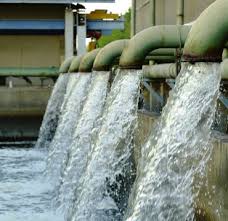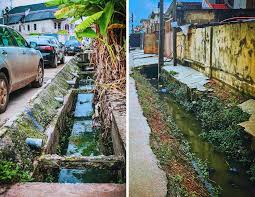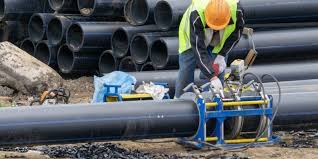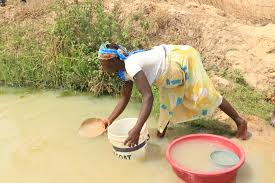Nigeria is dominated by two main river systems, namely the Niger-Benue and Chad systems. These systems have several tributaries and support activities such as agriculture and fishing. Water in Nigeria is managed by the Federal, State, and Local Governments concurrently.
The Federal Government manages marine fisheries, while the State Governments manage rivers within their jurisdiction. Local Governments provide water to communities by sinking boreholes and wells. Lake Chad is shared by four countries Nigeria, Cameroon, Niger, and Chad with Nigeria controlling 25%.
The management of Lake Chad is overseen by a committee established by these four countries. This article will also cover the integrated river basin management program and the key principles involved.
Hydrology and Inland Water Resources of Nigeria

Nigeria is dominated by the Niger-Benue and Chad river systems. The country’s tropical climate is characterized by high temperatures and humidity, with distinct wet and dry seasons. Rainfall decreases from the southern to the northern regions.
A large mangrove ecosystem exists, with the largest portion located in the Niger Delta area, as well as in Ondo and Lagos States. The total surface area of water bodies in Nigeria, excluding deltas, estuaries, and wetlands, is estimated at 14,991,900 hectares (about 15% of the total land area).
Major rivers in Nigeria include Niger, Benue, Anambra, Cross River, Imo, Qua Iboe, Ogun, and Osun. Lake Chad is the primary natural lake, while man-made lakes and reservoirs include Kainji, Jebba, Kiri, Bakalori, Lower Anambra, Zobe, Oyan, Shiroro, Goronyo, Tiga, Chalawa Gorge, Dadin Kowa, and Kiri.
Other freshwater bodies include the Niger Delta freshwater area, Niger/Sokoto basin, Niger/Kaduna basin, Benue River flood plain, Hadejia-Komadugu-Yobe, Ogun/Osun flood plains, Imo River flood plains, Qua Iboe, reservoirs, and fish ponds.
Brackish waters include Shiroro, Goronyo, Tiga, Chalawa Gorge, Dadin Kowa, the Niger Delta, Cross River Estuary, Imo, and Qua Iboe estuaries (Ita, 1993).
Read Also: How to Extract and Package Snail Slime (Snail filtrate) for Commercial Use
Important Drainage Systems in Nigeria

Nigeria has four major drainage basin areas (Federal Ministry of Water Resources, 2003 a, b):
- The lower Niger, which includes tributaries such as Benue, Sokoto-Rima, Kaduna, Gongola, Katsina-Ala, Dongo, Taraba, Hawal, and Anambra Rivers.
- The Lake Chad inland drainage system, comprising rivers like Kano, Hadejia, Jama’are, Misau, Komadugu-Yobe, Yedseram, and Ebeji.
- The Atlantic drainage system to the east of the Niger, including the Cross River, Imo, Qua Iboe, and Kwa Rivers.
- The Atlantic drainage system to the west of the Niger, consisting of the Ogun, Osun, Owena, and Benin Rivers.
Nigeria’s surface and groundwater resources are estimated at over 250 x 10⁹ m³ (Federal Republic of Nigeria, 2001).
Management of Water Resources in Nigeria
The variable river regimes in Nigeria necessitate the storage of water for various uses. Approximately 142 dams have been constructed or are under construction, including 60 large dams (above 15 m in height) and 82 small to medium dams. Around 85% of the large dams are located in the northern and central states to store wet season runoff for dry season irrigation.
The main goals of water resource management in Nigeria include:
- Provision of urban water supply.
- Generation of hydropower.
- Development of large-scale surface irrigation.
- Navigation.
Read Also: The Health Benefits of Using Accent Seasoning on your Cooking
Administrative Responsibility for Managing Water in Nigeria

Water management in Nigeria is shared among the Federal, State, and Local Governments. The Federal Government is responsible for water resources management and policy-making, while State Governments handle urban water management.
Local Governments oversee rural water supply, although their capacity to plan and execute these tasks is limited. The Federal Ministry of Water Resources, established in 1976, was later merged with the Ministry of Agriculture.
Federal Government’s Role in Water Management
The Federal Ministry of Water Resources is responsible for large-scale water resource development projects, irrigation work, and the provision of water in bulk to states and cities from dams.
The ministry also collects hydrological and hydrogeological data. River Basin Development Authorities, operating under the Ministry, manage water resources across various regions. These include the Sokoto-Rima, Hadejia-Jama’are, Lake Chad, Upper Benue, Lower Benue, Cross River, Anambra-Imo, Niger, Niger Delta, Benin-Owena, and Ogun-Osun basins.
The River Basin Development Authorities were established by the Federal Government in 1976 to harness Nigeria’s water resources for multiple purposes, including irrigation, flood control, and hydroelectric power generation. Their responsibilities include constructing and maintaining dams, irrigation systems, and water supply schemes for various uses.
State Governments’ Role in Water Management
State Water Agencies (SWAs) are responsible for urban potable water supply across the 36 states. These agencies report to their respective State Ministries of Water Resources. In some states, SWAs are also responsible for rural water supply. The enforcement of inland fisheries laws by State and Federal Governments has been emphasized as crucial for the effective management of inland water fisheries in Nigeria (Ita et al., 1985).
State governments, through water corporations or boards, manage water by procuring raw water from river basins and distributing it for various uses. Some water corporations also maintain their own reservoirs, such as the Benin-Owena River Basin.
Local Governments’ Role in Water Management
Local Government Authorities (LGAs) are responsible for rural water supply and sanitation facilities within their jurisdictions. However, many LGAs lack the resources to meet these needs effectively. Only a few LGAs have established rural water supply divisions.
Foreign Partners and Non-Governmental Organizations in Water and Sanitation Management
Several international partners and NGOs are involved in Nigeria’s water supply and sanitation sector. Notable partners include the African Development Bank, the European Union, the Japanese International Cooperation Agency (JICA), UNICEF, USAID, Water Aid, and the World Bank. Nigerian NGOs, such as the Society for Water and Sanitation in Nigeria (NEWSAN) and the Justice Development and Peace Initiative (JDPI), also play a significant role in water management programs.
Lake Chad Management
Lake Chad is West Africa’s largest lake, with Nigeria controlling 25% of its area. The lake is managed by the Lake Chad Basin Commission, which Nigeria joined in 1962, alongside Cameroon, Niger, and Chad. The lake’s inflow, primarily contributed by the Chari-Logone river system outside Nigeria, fluctuates depending on rainfall.
Lake Chad is an important wetland located in the semi-arid Sahel corridor, supporting irrigation projects like the South Chad irrigation project.
Integrated River Basin Management in Nigeria
Integrated river basin management (IRBM) involves managing water in a holistic way, shifting from sectoral approaches to a more sustainable model. This approach seeks to satisfy human and environmental needs while promoting stakeholder participation. Nigeria is reforming its water resources management at the basin level to meet its water-related Millennium Development Goals (MDGs).
Key elements of Integrated River Basin Management include:
- Long-term vision for river basin management.
- Integration of policies and decisions across sectors like agriculture, industry, and conservation.
- Strategic decision-making at the river basin scale.
- Effective timing of actions and opportunities.
- Active participation by all stakeholders.
- Adequate investment in capacity building for river basin planning.
- Strong knowledge of the river basin and its socio-economic dynamics.
The development and management of water resources in Nigeria are critical to meeting domestic, agricultural, and industrial needs. The Federal Government, through the River Basin Authorities, undertakes major water-related projects such as dam construction, while Local Governments focus on providing wells and boreholes within their jurisdictions.
Do you have any questions, suggestions, or contributions? If so, please feel free to use the comment box below to share your thoughts. We also encourage you to kindly share this information with others who might benefit from it. Since we can’t reach everyone at once, we truly appreciate your help in spreading the word. Thank you so much for your support and for sharing!
Read Also: A Child’s Guide to Castle Grayskall Toys: The Perfect Gift for Your Little Knight or Princess

